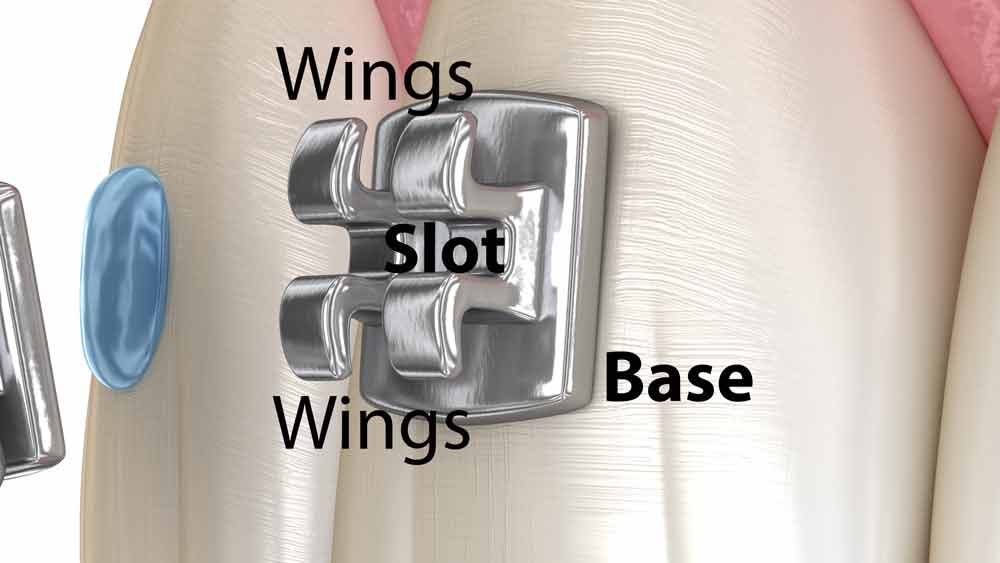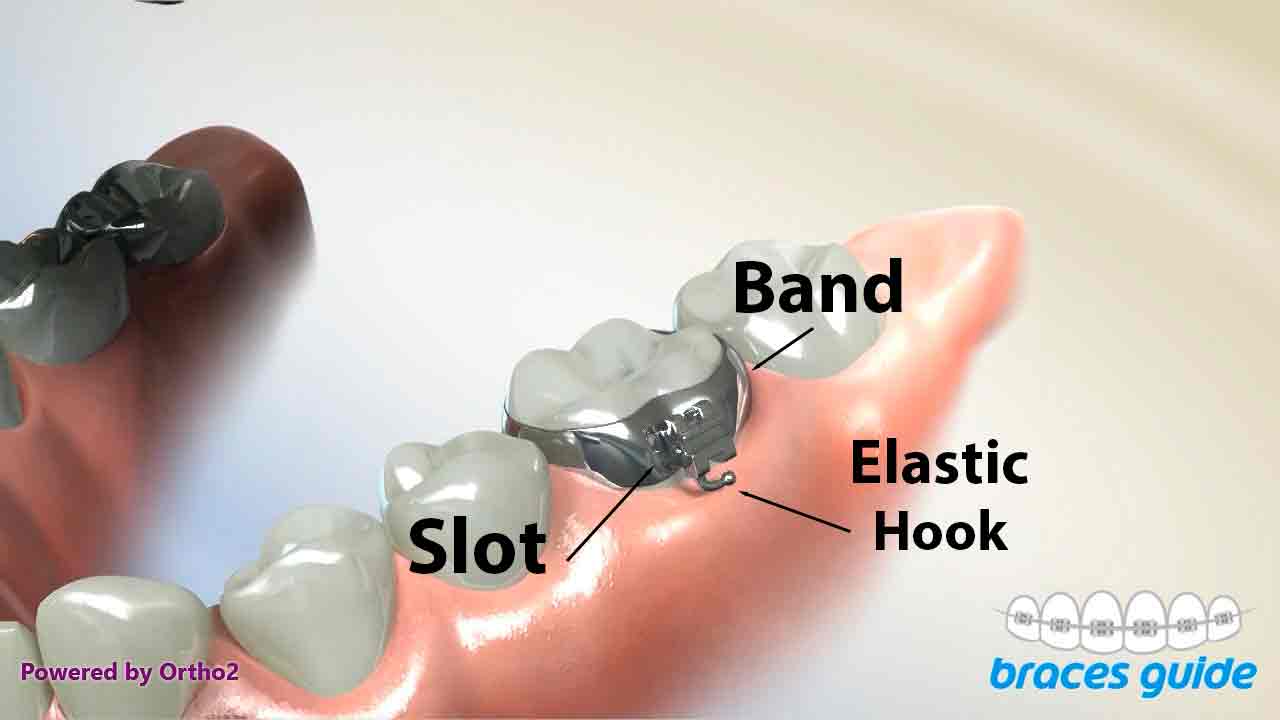Braces have been around for a very long time. In fact, a simple form of orthodontic appliances has been documented as early as 1000 B.C. The design and components have changed and been improved over the years, but the basic idea has remained largely the same.
The basic idea behind braces is to produce a force on a tooth in a specific, controlled amount and direction to move a tooth (the biology of just how a tooth moves when a force is applied will be discussed later).
Bracket
A photo of a bracket, or a single brace, that is attached to the front side of a tooth is shown below. The diagram below shows the basic components of a bracket, which are the wings, slot, and base. The slot is where the wire is placed. Wings provide a means to hold a wire into the slot with a small rubber band. The base is used to attach the bracket to the tooth.

Band
A band is also a part of the braces, currently used primarily on the back molar teeth. It was commonplace to band all of the teeth even as recent as 20 years ago. With the introduction of newer bonding materials, bands have become less common except for the back molars. Bands are sometimes used for the teeth in front of the molars (premolars), though most orthodontists will bond brackets to these teeth.
A picture of a band on a molar is shown below. The bands provide the same type of attachments as a bracket that is glued to the teeth, except the wire slides into a tube. The tube provides added support for tooth movement with the wires, and the band surrounding the tooth provides added structural support and security against breakage.
